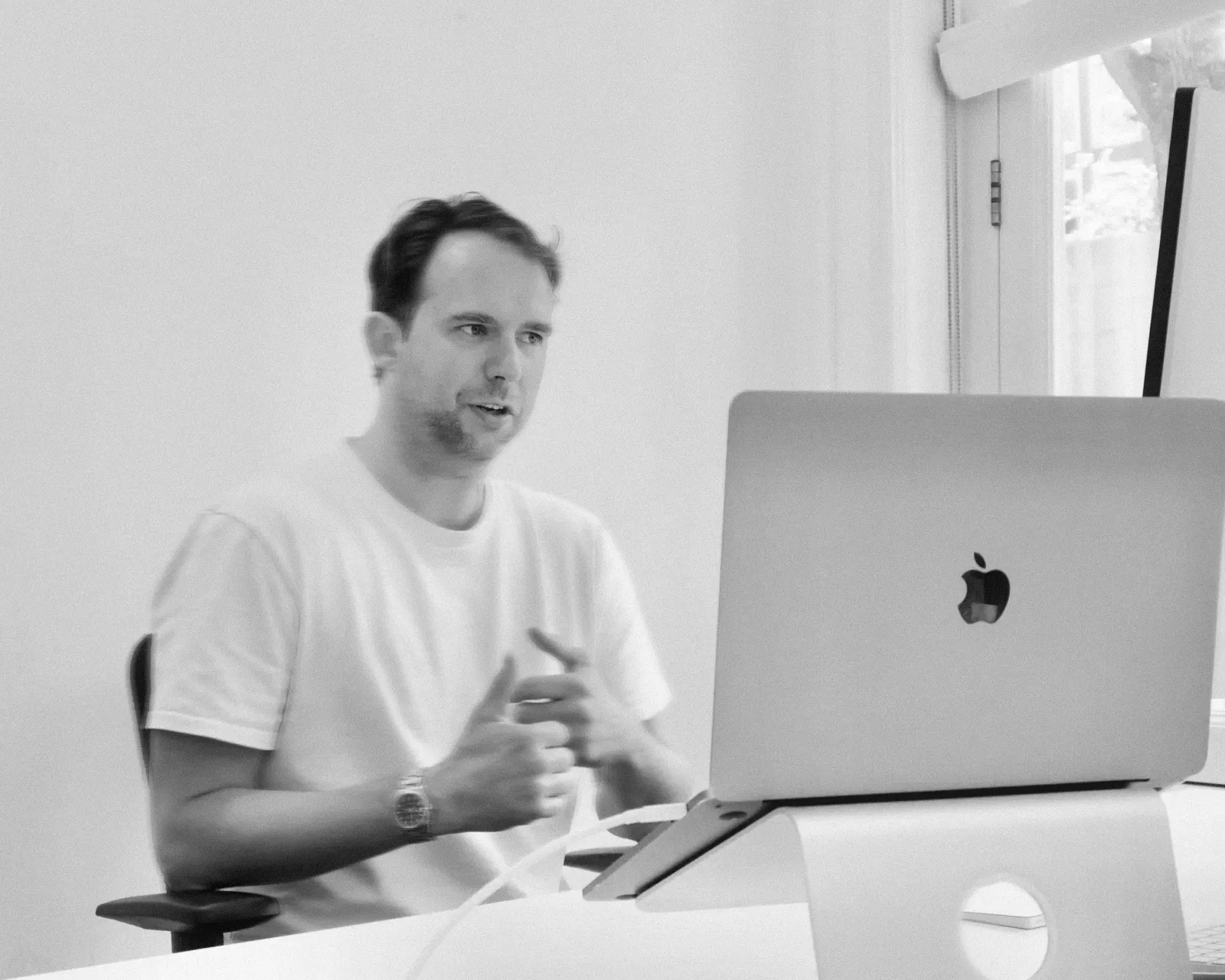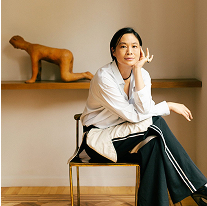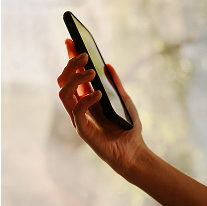Pension investing vs. Pension saving: Which suits you?
Many young investors and workers wonder how best to save for later: do you opt for pension investing or pension savings? Both are ways to build up an additional pension yourself with tax benefits, but there are important differences in risk and return. In this blog, we explain in a light and understandable way what both entail and help you make the right choice. We compare them on definition, similarities, differences, risks, potential returns, pros and cons. Finally, we give some practical tips.
What is pension investing?
Pension investing is simply investing for your pension in a special blocked account. You deposit money periodically or once into this account and that money is invested (often in index funds or mixed funds) to grow in the long term. You may only withdraw the money once you reach retirement age (AOW age) – earlier is in principle not possible without fiscal consequences. During the accumulation phase, you benefit from tax advantages: the contribution is deductible from income tax (within your annual allowance) and you do not pay wealth tax on the accumulated capital. Pension investing can therefore be attractive to supplement your pension pot, especially for young people with a long investment horizon who are prepared to take some risk for potentially higher returns.
What is pension saving?
Pension savings (also called bank savings for pension) is a form of saving for later in a special pension savings account. Instead of investing, your money is placed in a savings account, often with a fixed or variable interest rate. This money is also locked in until your retirement date (usually you can only withdraw it from your AOW age). Just as with pension investing, you receive a tax benefit: deposits are deductible (within your annual allowance) and the balance is not subject to wealth tax. Pension savings is seen as a relatively safe way to build up capital for later, because you are not exposed to stock market fluctuations. You know more or less how much capital you are building up, depending on the interest rate, and you run little risk compared to investing. The downside is that the expected return is usually lower than with investing, especially in times of low interest rates.
Agreements
Both options are similar in design and serve the same purpose: you build your own extra pension fund (the so-called third pillar of the Dutch pension system). Some important similarities:
- Tax advantage: Both pension savings and investments are done in a blocked annuity account, which means that your contribution (within your annual/reserve capacity) is tax-deductible and the assets are exempt from wealth tax. This can give you hundreds to thousands of euros in benefits compared to saving outside this scheme.
- Blocked pension account: In both cases, your money is locked in until (at least) your state pension age. You cannot withdraw the funds prematurely without a tax penalty (redemption payment) and paying missed taxes. This requires you to really be able to miss this money until your retirement.
- Supplementary pension: Both products are designed to supplement any pension shortfall. They are interesting if you have a pension gap (for example, if you are self-employed or do not accrue a full pension through your employer). If you do not have a pension shortfall (and therefore no annual allowance), you can hardly use these options.
- Payout phase: Ultimately, the accumulated capital upon retirement must be used for an annuity payment (a periodic payment as a supplement to AOW and any employer's pension). This applies to both capital from pension savings and investments; the tax rules surrounding it are the same.
Differences
Despite the similarities, there are clear differences between pension investing and pension saving. The most important ones have to do with risk and return:
- Risk & Guarantee: With pension investing you run investment risk. The value of your investments can fluctuate; there is no guarantee that your deposit will grow – you can even suffer (temporary) losses. Pension savings, on the other hand, offer much more certainty: you receive a pre-known or variable interest rate on your savings, and your deposit itself remains intact. So you know more or less what you will end up with, apart from interest rate changes. There is deposit guarantee: your savings are covered (per bank) by the deposit guarantee scheme up to €100,000, so even if the bank goes bankrupt, your balance is safe up to that amount. With investments there is no deposit guarantee, although investors' assets are often legally protected should a broker or bank go bankrupt.
- (Expected) Return: Historically, the expected return on pension investing is higher than with pension savings. Investing in a globally diversified portfolio can yield an average return of approximately 4-8% per year in the long term (depending on your risk profile), while saving has long yielded 0-2% per year. With pension savings, your return depends on the savings rate, which is generally lower than returns on the stock market. In short: investing = chance of higher return, saving = certainty of lower (but stable) return.
- Costs: Pension savings are often simple in terms of costs: many providers charge a one-off opening fee (e.g. ~ €40) and no further ongoing costs for the savings account. With pension investing, you usually pay annual costs (service costs and fund costs) on your investments. These costs put some pressure on your net return. Please note: costs may vary per provider (e.g. Brand New Day ~0.5% per year, Centraal Beheer ~0.3% per year, BrightPensioen works with fixed membership costs, etc.). It pays to compare rates.
- Flexibility in implementation: With pension savings, you can often choose between variable interest (interest that can change) or deposits with a fixed interest rate for X years. You also decide how much and when you deposit (within the tax allowance). With pension investing, you choose an investment profile (from defensive to offensive), or the provider automatically adjusts this via a lifecycle (young = offensive, towards retirement more defensive). So you have slightly more investment choices. Some people even combine both: save a portion, invest a portion, to spread risk.
Risks
No financial product is without risk. These are the risks to consider when investing in or saving for a pension:
- Risk with pension investing: Investing involves the well-known market and price risk. The value of your pension investments can fluctuate greatly in the short term. A stock market crash just before your retirement can temporarily depress the value of your pot. In 2022, for example, offensive pension portfolios lost around 15% in value. Fortunately, young people have time to make up for such a dip, but it remains a risk. Over longer periods, investments historically recover – see the significant increase in 2019, 2020 and 2021 – but there is no guarantee. You have to be mentally prepared that your balance can fall on paper. In addition: with incorrect investing (e.g. everything in one share) you run an enormous risk; that is why pension providers always invest in a diversified manner in index funds. Finally, with investing you have inflation protection: shares and other assets move with inflation in the long term, which is positive, but this is accompanied by volatility along the way.
- Risk with pension savings: Pension savings has little investment risk – after all, you receive interest. Yet there are other risks. An important one is inflation/interest rate risk: if the savings rate is lower than inflation, your money loses purchasing power. For years, the interest rate was practically 0%, while prices rose; your assets did not grow in real terms then. Currently, the interest rate is somewhat higher again, but it may fall again in the future or rise less sharply than inflation. If you opt for a variable interest rate, the provider can adjust it at any time. If you opt for a long fixed deposit, you run the risk that the interest rate in the market will rise while you are stuck at a lower interest rate (or vice versa, that can of course also turn out positively). Furthermore, it also applies here that your money is locked in: if you still want to access your pension savings pot in the interim, you pay a hefty tax penalty and it is taxed as income. Finally, your savings are guaranteed up to €100,000 at a bank, but if you have more pension assets and they happen to be at one bank, the amount above that is not covered in the event of bankruptcy – although this scenario is very unlikely and you can spread it over several banks if necessary.
Potential returns
What return can you realistically expect now? We first look at the current interest rates for pension savings accounts, and then at historical investment returns for pension investing.
- Interest rates pension savings (Netherlands): Due to the increased interest rates in 2023-2024, pension savings are again yielding a reasonable interest percentage. Currently (early 2025), online banks and insurers offer approximately the following interest rates: a variable interest rate around 1.8 – 2.0% per year, and fixed deposit interest rates of ~2.3% to 2.8% depending on the term. For example, Knab Pensioensparen currently offers 1.90% variable and up to 2.35% fixed. Brand New Day offers 1.80% variable interest (as of 24-2-2025) and, for example, 2.40% fixed for 1-3 years, rising to 2.50% fixed for deposits of 10+ years. Major banks are also participating: Rabobank's Rabo ToekomstSparen has interest rates of 2.65%–2.80% per year for long terms. These interest rates can of course change with the market and are historically still relatively low (but considerably better than the ~0% of a few years ago).
- Average returns on pension investments: The return on pension investments depends on your investment profile (how much % shares vs bonds). Over the past ~5-10 years, many pension investors have achieved good results, but with outliers upwards and downwards. Some indicative figures: at Brand New Day, which invests standard in index funds, a very offensive profile achieved on average approx. 8.6% return per year, offensive ~6.8%, neutral ~5.3%, defensive ~3.7%, and very defensive ~2.1% per year (measured over 2010 to 2024). Here we see the effect of more shares (= higher average return, but also greater fluctuations). For illustration: 2022 was a bad stock market year with approximately –15% for almost all profiles, while 2023 showed a strong recovery (+11% for neutral, even +17-18% for offensive). A provider such as BrightPensioen (with a neutral profile fund) achieved an average of ~6% per year over the past 9 years. Large pension funds (such as ABP) have been around ~6% per year over the past decades.
Conclusion: in the long term, investments can yield around 4-8% per year depending on your risk, but there is no guarantee – there may also be a few lean or negative years. Saving now yields ~2% per year with certainty. This difference in potential return is precisely the trade-off between pension investing and saving.
{potential image here}
Image: Illustration of growing pension capital through investment. Investing can yield a higher return in the long term than saving, albeit with more volatility.
Pros and cons
Finally, we list the advantages and disadvantages of both options. What are the pros and cons of pension investing versus pension saving?
Pension investing – Advantages:
- Higher expected return: As mentioned, the chance of a higher return in the long term is greater. Historically, investments over 10+ years have almost always yielded more than savings. So your assets can grow faster.
- Protection against low interest/inflation: You are not dependent on the bank interest rate. In the event of inflation and economic growth, corporate profits and dividends often rise, which is reflected in the price. This potentially allows your pension pot to better maintain its purchasing power.
- Tax advantages: Just like with pension savings, you get tax deduction on your contributions and you do not pay wealth tax during the term. This advantage is the same for both, but it weighs extra if you achieve a high return (the growth is then tax-free).
- Flexibility in investments: You can usually choose your risk profile. A more offensive profile offers more chance of growth, a more defensive one offers more stability - you tailor it to your personal risk tolerance. Some providers (such as BrightPensioen) invest sustainably; so you can also choose to invest in a way that suits you.
- Long horizon works in your favor: Investing yields the best results over long periods thanks to compound interest. If you start young, your deposit can grow exponentially over the years. Time is your friend when investing.
Pension investing – Disadvantages:
- Investment risk: It remains the biggest disadvantage: there are no guarantees. You have to be able to live with uncertainty and the possibility of setbacks. Not everyone sleeps well with the idea of the stock market fluctuating their pension money.
- Less certainty about the final amount: Because the outcome is variable, you do not know exactly how much pension you will ultimately have. You can use a pension planner with conservative assumptions, but it remains a forecast.
- Costs and complexity: Investing often involves slightly higher costs (service costs, fund costs). It also requires understanding of what investing entails – although asset managers do the work for you, you must have basic knowledge to persevere during dips. In fact, you become a pension fund manager yourself over your deposit.
- Money locked in: Just like with pension savings, your money is locked in until retirement age (so this is not a unique disadvantage of investing, but something to be aware of).
Pension savings – Advantages:
- Safety and security: The biggest advantage. Your deposit is not exposed to the vagaries of the stock market. You get a fixed or variable return in the form of interest, and your savings balance cannot decrease due to market developments. As a result, you know fairly certain how much you will have on the end date (especially with fixed deposits)
- No knowledge of investing required: Anyone can open a pension savings account; you don't have to be an expert. The product is clear and understandable – basically a savings account with a lock on it. That makes it accessible.
- Deposit guarantee: As mentioned, a pension savings account with a bank is covered by the deposit guarantee scheme up to €100,000. So you run practically no risk of losing your nominal deposit. That gives peace of mind.
- Also fiscally advantageous: You get the same tax benefits as with pension investing (deductible contributions, no wealth tax). So you don't lose out in that area.
- Suitable for short horizon: If you are going to retire within 5-10 years, for example, or are already retired and want to use bank savings for a while (unused annual allowance), pension savings is ideal. You then run no risk of an interim stock market dip just before your pension payments start
Pension savings – Disadvantages:
- Lower (potential) return: In exchange for security, you sacrifice yield. Savings rates are historically much lower than stock market returns, especially after deducting inflation.
- In periods of low interest rates, your money hardly grows. You, therefore, have to deposit more to build up the same capital as someone who invests (or settle for a smaller pension pot).
- Inflation risk: As discussed, high inflation can affect the real value of your savings, especially if the interest rate is (just) lower than the inflation rate. You are not exposed to investment risk, but you do run the risk of your purchasing power decreasing.
- No unexpected windfalls: Where an investor might benefit from a few excellent stock market years and have a much higher balance than expected, such a windfall will not occur with savings. Your return is more or less limited by the interest rate agreements.
- Money locked in: Here too, the following applies: you can't just access your money. It is less a disadvantage of saving per se (it is, after all, the fiscal condition), but something to mention – you have the lack of interim flexibility with both routes.
Conclusion and practical tips
What to choose? Ultimately, the choice between pension investing vs. pension saving depends on your personal situation, preferences, and financial goals. If you are young and have decades until retirement, and you don't mind taking some risk? Then pension investing may be interesting because of the higher expected return in the long term. If you have a short horizon to retirement or prefer security? Then pension saving is probably more suitable, because you will not experience any surprises and know exactly where you stand. In practice, many people combine the best of both worlds: for example, investing part of their money for the medium term and securing part of it in pension deposits for security. This way you spread risk and return. Remember: there is no right or wrong – it's about what best suits your situation.
Practical tips to get the most out of your pension accrual:
- Use your annual allowance: Check every year how much annual allowance (or reserve capacity) you have - this is the amount that you can deposit tax-efficiently in a pension product. You can calculate this via the Tax Authorities or tools from banks. Make the most of that space, because that yields a tax refund of 37% to as much as 49.5% of your contribution.
- Compare interest rates and costs per provider: The differences between providers can be significant. Shop around at banks (Knab, Rabobank, ABN, etc.) and specialized players (Brand New Day, BrightPensioen, Centraal Beheer) for both pension savings and investments. Pay attention to the interest rate offered (for savings) and the costs and investment options (for investments). A small difference in costs or interest can make a considerable difference to the final amount over decades. Fortunately, much of this information is public: interest rate tables and average returns can be found on their websites.
- Determine your risk profile and horizon: Honestly ask yourself how much risk you are comfortable with. Can you tolerate a 20% drop without panicking? Or would you rather not? Adjust your choice accordingly. Young people can generally take more risk (more shares) because they have a long horizon to ride out fluctuations. As you get older, you can make your profile more defensive or (partly) switch to pension savings to cash in your profits.
- Start on time (preferably as early as possible): Time is a hugely important factor due to the effect of compound interest. Starting early with a relatively small amount can yield more at a later age than starting late with a large amount. Moreover, you can then calmly endure a few bad investment years. Starting during your studies or first job (even with €50 per month) can therefore be rewarding.
- Be patient when investing: If you choose pension investing, take a long-term perspective. Don't look at your balance daily, but realize that ups and downs are normal. Try to invest periodically (spread over time) so that you don't invest all your money exactly at a peak or trough. And don't abandon your plan in a panic if the stock market becomes turbulent. Pension investing is meant to be 'boring' – let it yield on autopilot and focus on the long term.
- Consider advice or tools: Still in doubt? Use online pension comparison tools, blogs (like this one 😃) and calculation tools. Many providers offer free consultation or webinars on pension accrual. Sometimes an independent financial advisor can help you make a decision, especially if your situation is more complex.
Conclusion: Both options – pension investing and pension saving – can be an excellent way to arrange a nest egg for your old age. One is not necessarily “better” than the other; it's about what suits you. With the information and tips in this blog, you can make an informed choice. In any case, start planning your pension on time, take advantage of your tax benefits and choose an approach that makes you feel good.

maak een afspraak
Klaar voor een moderne oplossing voor pensioen of vermogen? Maak vrijblijvend kennis met Vive en ontdek wat kan - voor jouw organisatie.
Complex pensioen, simpel uitgelegd - weet direct waar je staat
Persoonlijk gesprek voor jouw situatie en die van je werkenemers
In 30 minuten meer duidelijkheid dan uren googlen
Alle ruimte voor vragen aan onze ervaren pensioenexperts









